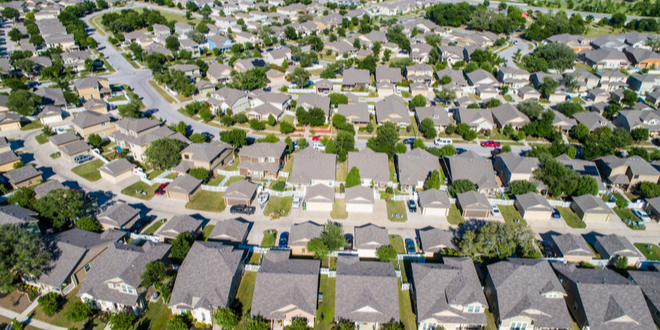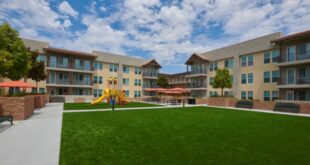SB-12, is intended to keep single-family homes out of areas deemed a high risk for fires, according to its proponents. But its foes see the bill as yet another example of bureaucratic overreach on the part of Sacramento lawmakers that could deliver a crippling blow to the state’s housing industry.
A bill that its critics say would make it more difficult to build houses in California has the state’s leading homebuilding trade association preparing for battle.
Introduced in December, Senate Bill 12 would lead to “an avalanche of new regulations” intended to protect houses from wildfires, according to the Building Industry Association of Southern California.
If passed, SB-12 would give state agencies “excessive control over the state’s decision-making process” regarding the placement of housing, the association stated.
That language was part of a “mobilization alert” email the association sent to its members April 17, urging them to oppose the proposed law authored by State Sen. Mike McGuire, D-Healdsburg.
Such a missive is sent out only if the association believes a bill will cause a serious slowdown in home construction if it becomes law, said Nick Cammarota, general counsel for the association.
“About 3,000 bills might come out of the state legislature every year,” Cammarota said. “We might send a mobilization alert out on four or five of them.”
The five-paragraph declarations also takes SB-12 to task for potentially making it more difficult for local governments to issue housing permits in areas where severe fires are more likely to happen.
Those regulations, which the association deemed “bureaucratic overreach,” would effectively put an end to housing development in many parts of California, a time when the state is dealing with a severe housing crisis.
“SB-12 gives immense power to a single state agency [the California Office of Planning and Research] that can essentially write-off large swaths of developable and appropriate land for housing,” the association declared in a seven-page critique of the bill, an assessment endorsed by the California Chamber of Commerce, the California Properties Association and the California Builders Alliance, among other business agencies. “It makes affordable housing unattainable and will hurt our cities ability to reach their local housing goals.”
The Board of Fire and Forestry Protection is responsible for identifying all areas susceptible to wildfires that the state is responsible for protecting, according to the State Senate’s 14-page analysis and summary of SB-12.
Likewise, local agencies would designate the high-risk fire areas for which they’re responsible.
CalFIRE, the division of the California Department of Forestry and Fire Protection that is the state’s fire-prevention agency, identifies the low- to high-risk fire territories in state and local categories.
If passed, SB-12 will impose new planning requirements on local jurisdictions, including identifying “very high risk fire areas” in state and local-responsibility areas. It will shift much of the responsibility for preventing fires to local jurisdictions, which will get help carrying out their prevention plans from CalFire and the State Fire Marshal.
The largest and most destructive wildfires in California’s history have happened within the last 10 years, with more than 38,000 homes and structures destroyed during that time, the analysis notes.
Taking action to reverse that trend is even more urgent as climate change increases and the possibility of more fires becomes greater.
Ultimately, McGuire’s bill only requires local governments to identify fire risk zones in their communities, then develop their housing policies with those areas in mind.
“As climate change deepens and [temperatures] grow hotter, the hazard that wildfires pose to California is greater than ever before,” the analysis states. “We must take decisive action now to save lives.’
It also takes exception to the charge that SB-12 – which has been endorsed by the California Fire Chiefs Association, the Local Government Commission and the National Fire Protection Association – is a “housing killer,” as the building association maintains.
“SB-12 does not say that communities cannot develop [housing]” the analysis states. “But it does tell them that they have to do it safely using new and aggressive wildfire risk reduction standards,” the analysis states.
Sen. Maguire did not return calls seeking comment.
But SB-12 would make it “nearly impossible” to build single-family homes in some parts of California, according to Cammarota.
“It’s a very confusing bill, very difficult to understand, and it is a housing killer,” Cammarota said. “It ignores the fact there is no perfect place to build a house in California. It says you can’t build a house near an area that might catch fire. The first house ever built in California was probably built in an area that could catch fire.”
Today’s housing – whether it’s single-family homes, townhouses or condominiums – is much less risky than it used to be, with non-flammable building materials, indoor sprinklers, fire-retardant roofs and other safety precautions now required by law.
“We’ve made homebuilding in California about as safe as we can make it,” Cammarota said.
Gov. Gavin Newsom, who has declared he wants to build 3.5 million housing units by 2025, last year vetoed a bill similar to SB-12, so there’s no guarantee SB-12 will become law, said one Inland housing official who spoke on condition of anonymity.
“I understand why the environmentalists support it, but we already have a major housing problem in the state, and now we might pass something that would cut out huge swaths of land [for homebuilding] statewide,” the housing official said. “Some people might see that as a problem.”
 IE Business Daily Business news for the Inland Empire.
IE Business Daily Business news for the Inland Empire.


